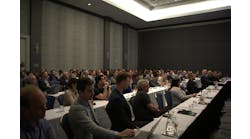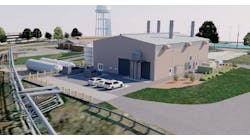Phyllis Cuttino, Pew
A bill before Congress would make industrial energy efficiency — including combined heat and power — eligible for federal investment tax credits. Phyllis Cuttino, of The Pew Charitable Trusts, explains the legislation’s importance.
It is often said that efficiency is the first and cheapest fuel. Yet highly efficient, cogeneration technologies, such as combined heat and power (CHP) and waste heat to power (WHP), that help the largest and most intensive energy users reduce use, costs, and pollution have been disadvantaged by the tax code relative to other clean and efficient energy sources. These technologies can double the overall efficiency of producing electricity and heating and cooling buildings. Also, CHP and WHP ensure that operations continue even when the lights go out, and they strengthen the electrical grid that is vulnerable to disruptions from extreme weather and cyber or physical attacks.
To rectify this inequity, a bicameral bipartisan group of federal legislators have introduced the Power Efficiency and Resiliency Act (POWER Act) that would ensure that combined heat and power and waste heat to power are treated in a manner that is on par with clean and efficient technologies covered by the investment tax credit. Senators Susan Collins (R-ME) and Robert Casey (D-PA) and Representatives Tom Reed (R-NY), Earl Blumenauer (D-OR), Mark Amodei (R-NV), Chris Collins (R-NY), Chris Gibson (R-NY), Joe Heck (R-NV), Ron Kind (D-WI), Tim Ryan (D-OH), Dina Titus (D-NV), and Peter Welch (D-VT) are original co-sponsors of the bill.
By amending Section 48 of the Internal Revenue Code, the legislation would reduce the initial capital cost of deploying combined heat and power and waste heat to power projects and spur investment in these efficient technologies.
More than 100 businesses that manufacture systems, develop projects, or are end users have already endorsed the bill, and members of Pew’s Clean Energy Business Network “stormed the Capital” last week to encourage support for the legislation. Their message is that these highly efficient systems and the POWER Act are good for the U.S. economy, for national security, and for the environment.
By producing heat and power from a single fuel source, combined heat and power has double the efficiency of central station power generation. Waste heat to power captures heat that would typically be vented from an industrial facility and uses it to make electricity with no incremental emissions. Both technologies dramatically lower energy use, costs, and emissions.
“Waste heat is an existing resource; it is the renewable we already have. In order for the U.S. to take advantage of this enormous resource to produce fuel-free and emission-free power, waste heat to power needs to be treated equal to other renewable technologies. This [legislation] will increase adoption rates, accelerate projects, and create U.S. manufacturing jobs for projects here and for exports across the globe. I fully support the POWER Act and truly believe it will be the market accelerator the U.S. needs to create jobs and take advantage of a vast, largely unutilized resource,” said John Fox, CEO of ElectraTherm.
Significantly increasing industrial energy efficiency can help reinvigorate our nation’s manufacturing base, creating 600,000 to 1 million highly skilled jobs, according to a study by the Department of Energy and the Oak Ridge National Laboratory. Further, a study by the Industrial Energy Consumers of America—an organization representing many of the country’s largest manufacturers—found that improving power generation efficiency could result in more than $200 billion in private investment over 10 years.
“Every year, the United States sends enough wasted heat from electricity generation up our chimneys to power Japan. Combined heat and power can harness this heat as a resource to create more electricity, nearly doubling efficiency,” says Paul Aubrey, president of Self-Gen Inc. “[The] POWER Act will help us use this technology throughout Maine and across the nation, moving the United States toward increased energy independence.”
With rising energy prices affecting companies large and small, using otherwise wasted heat can dramatically reduce costs and give businesses the flexibility to invest that money elsewhere. Although installation requires an initial investment, companies start to see savings within a few years. The POWER Act aims to help reduce the upfront financing necessary to install a system.
“This bill will make the United States more energy independent and generate new business opportunities and jobs manufacturing and installing these technologies throughout the nation,” says Philip Brennan, CEO of Echogen. “As a project developer in Ohio, we appreciate the new economic opportunities this bill will provide in our region.”
Many manufacturers, hospitals, and power companies across the country are putting their otherwise wasted energy to good use. But much more can be done. Bringing parity to the tax code for these industrial efficient systems would allow more major electricity users to take advantage of their benefits. With the bills introduced on both sides of Capitol Hill by a strong bipartisan group of members and with a wide range of business support, the time to keep up the momentum and move this legislation to the president’s desk is now.
Phyllis Cuttino is the director of the Clean Energy Initiative at The Pew Charitable Trusts. Her blog originally appeared on the organization’s website.







